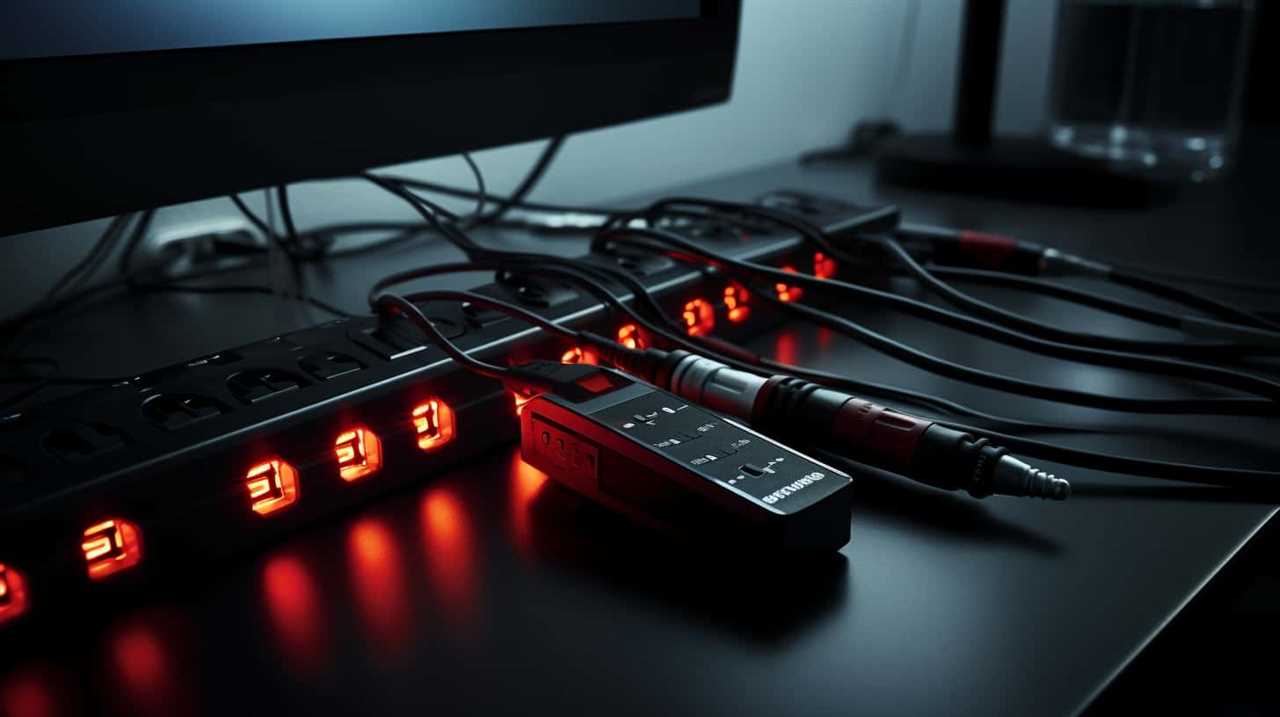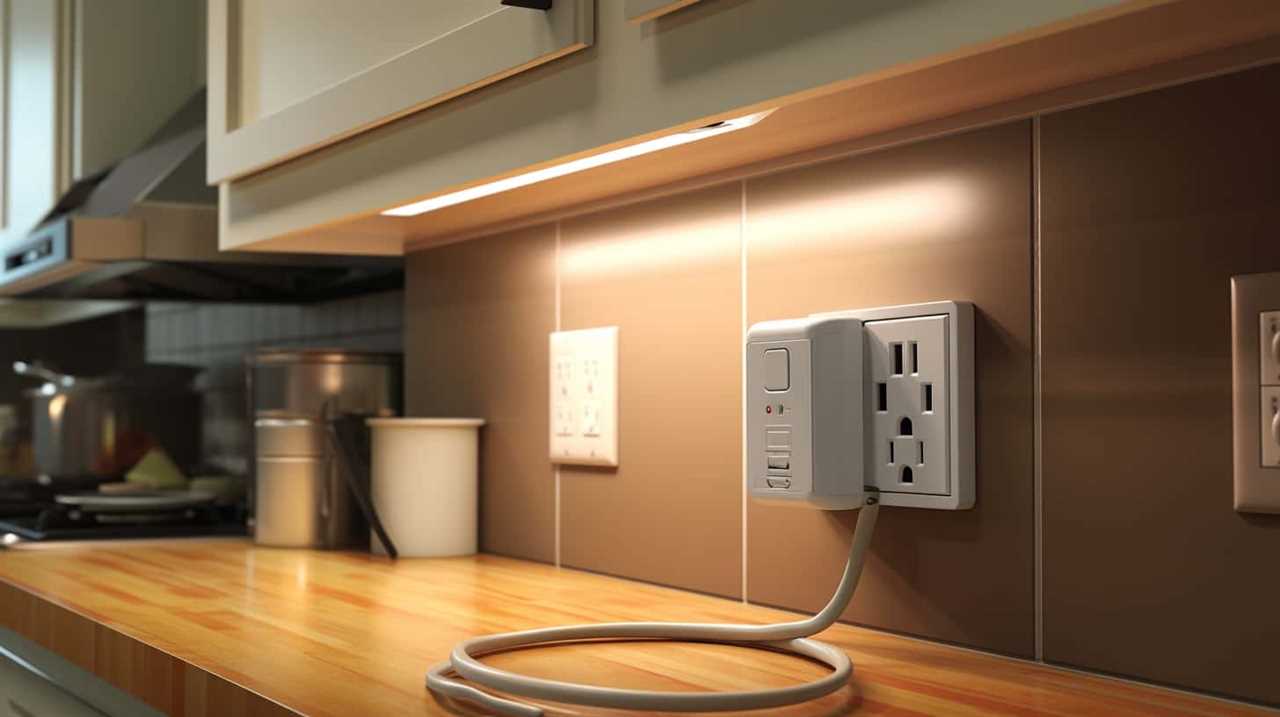When it comes to electrical safety and managing your household, a common question that arises is whether it’s safe to plug two appliances into the same outlet. Having a good grasp of electrical outlets and their limits is crucial for those looking to excel in this area.
This article aims to shed light on the subject by delving into power consumption, the types of appliances and their power requirements, and the potential risks associated with overloading a circuit. Furthermore, it explores the possibility of splitting the load using multi-outlet adapters and the limitations of extension cords.
The significance of proper wiring and maintenance cannot be overstated, making it imperative to seek professional advice and solutions. By adhering to these guidelines, individuals can ensure their electrical systems remain efficient and secure.
Key Takeaways
- The amperage rating of an outlet determines its maximum current capacity, and it is important to not exceed this limit to prevent damage or fires.
- The power consumption of appliances should be considered when plugging them into an outlet, and the total wattage of the appliances should be within the capacity of the outlet.
- Overloading an outlet can lead to overheating, tripped circuits, or electrical fires, so it is important to distribute appliances across multiple outlets and circuits to avoid overloading.
- Power strips, surge protectors, and multi-outlet adapters can be used to safely plug multiple appliances into one outlet, but it is crucial to avoid overloading them and regularly inspect them for signs of damage or wear.
Electrical Outlet Capacity
The electrical outlet capacity is determined by the amperage rating and the number of available receptacles.
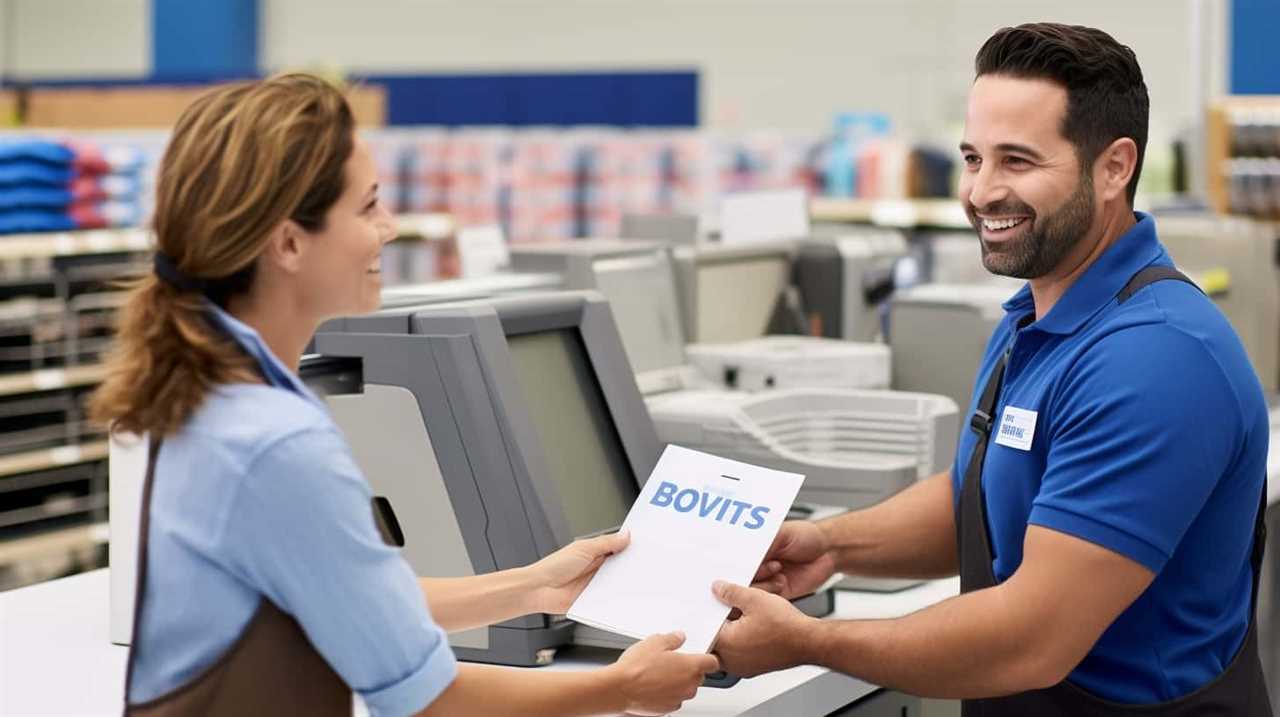
Amperage rating refers to the maximum amount of current that can safely flow through the outlet without causing damage or posing a risk of electrical fires. Each outlet has a specific amperage rating, typically ranging from 15 to 20 amps.
Additionally, the number of available receptacles on an outlet affects its power capacity. More receptacles allow for more devices to be plugged in simultaneously, but it is important to consider the total power consumption of all the devices connected to the outlet.
Understanding the power capacity of an outlet is crucial for electrical safety and preventing overloading, which can lead to overheating and potential hazards.
Understanding Power Consumption
To understand power consumption when plugging two appliances into one outlet, it is important to consider the individual wattage requirements and the total load capacity of the outlet. Here are four key points to keep in mind:
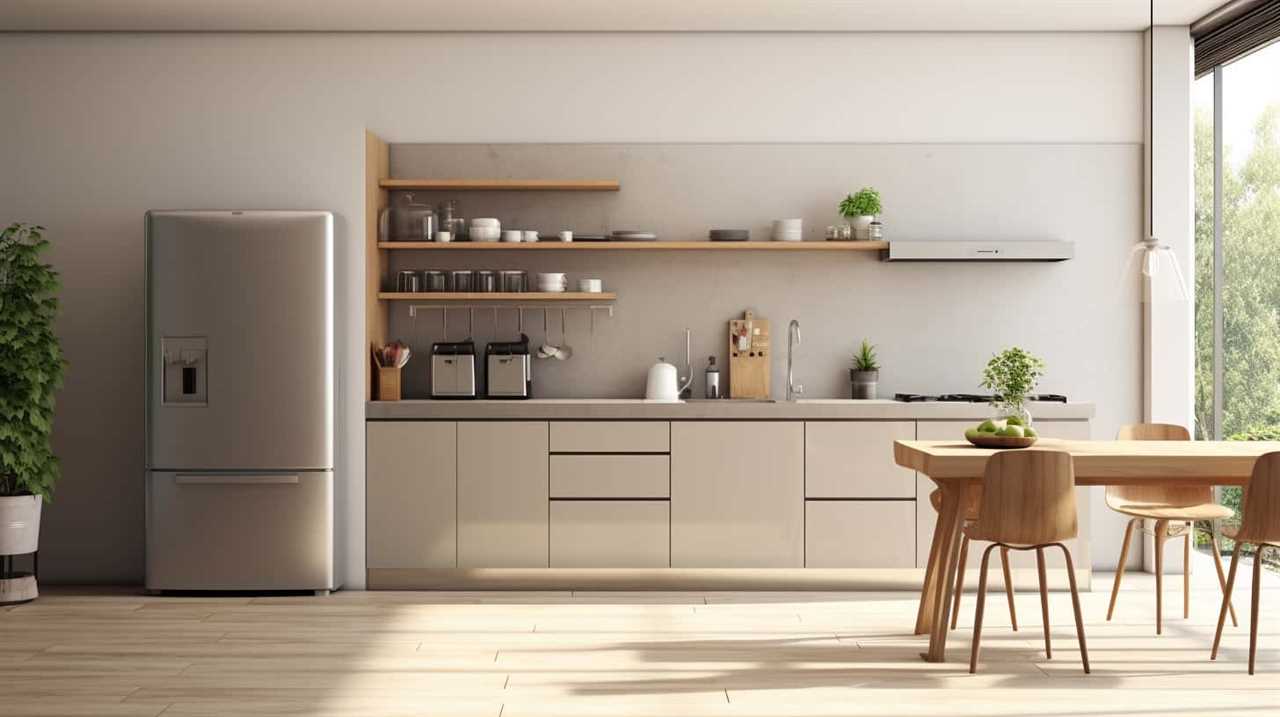
- Individual Wattage Requirements: Each appliance has a specific wattage requirement, which indicates the amount of power it consumes. It is crucial to check the wattage of both appliances to ensure they are within the capacity of the outlet.
- Total Load Capacity: Every electrical outlet has a maximum load capacity, typically measured in amps. Exceeding this capacity can lead to overheating, tripped circuits, or even electrical fires. Understanding the total load capacity of the outlet is essential to prevent such risks.
- Power Saving Tips: Consider using energy-efficient appliances that consume less power. This not only reduces the strain on the outlet but also helps conserve energy and lower electricity bills.
- Understanding Voltage: Apart from wattage, it is also essential to consider the voltage requirements of the appliances. Mismatched voltages can cause damage to the appliances or even pose a safety hazard.
Types of Appliances and Their Power Requirements
Understanding the power requirements of different types of appliances is crucial when considering whether or not you can plug two of them into one outlet. Each appliance has specific power consumption optimization needs, and it is important to assess these requirements to ensure safe and efficient operation.
Some appliances, such as refrigerators or air conditioners, require higher power consumption due to their larger size and complex mechanisms. On the other hand, smaller appliances like lamps or phone chargers have lower power requirements. Moreover, using energy efficient appliances can significantly reduce power consumption, allowing for more appliances to be plugged into a single outlet.
By understanding the power requirements of different appliances and utilizing energy efficient models, you can make informed decisions about plugging multiple appliances into one outlet without compromising safety or performance.
Transitioning into the next section, it is important to also consider the risk of overloading and tripping circuit breakers.
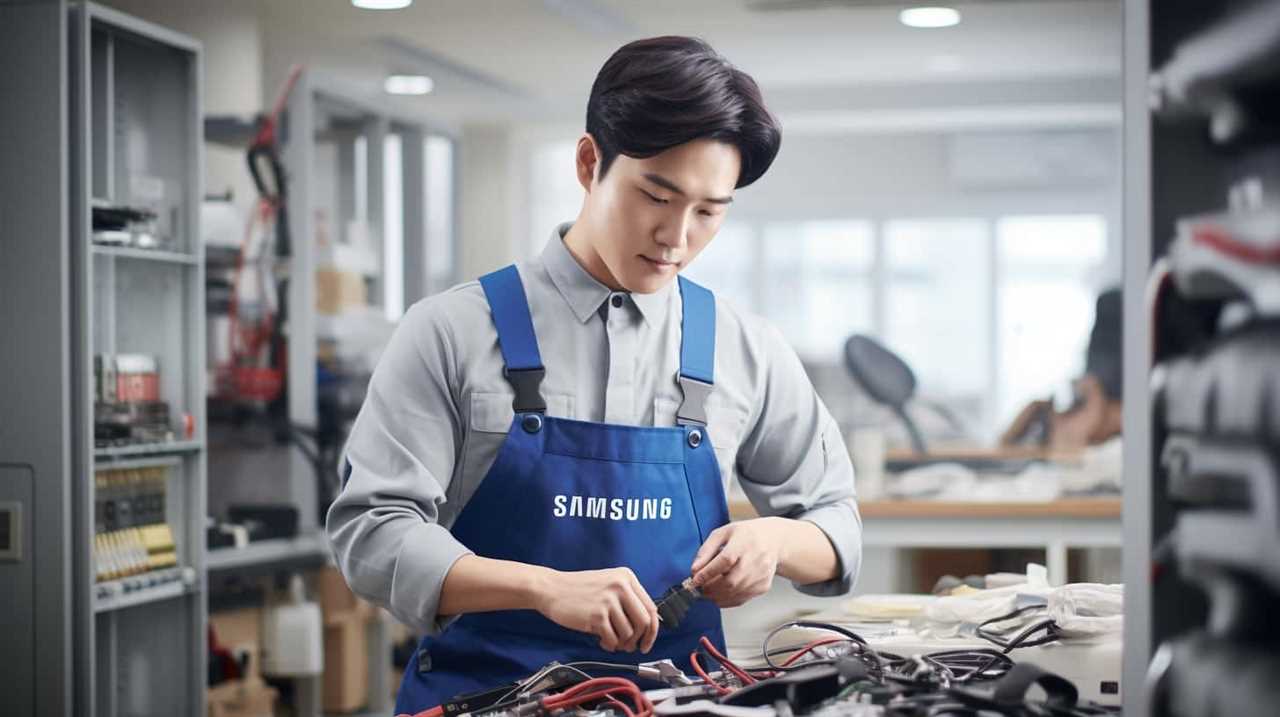
Overloading and Tripping Circuit Breakers
Appliances’ power consumption must be carefully considered to avoid overloading and tripping circuit breakers. Failure to do so can result in electrical hazards and potential damage to the appliances. Here are four crucial points to understand about overloaded circuits and circuit breaker tripping:
- Circuit capacity: Each circuit in a building has a specific capacity, measured in amps. This capacity determines the maximum load that can be safely drawn from the circuit.
- Power requirements: Different appliances have varying power requirements, typically indicated on their labels or in their manuals. It is important to add up the power consumption of appliances connected to a circuit to ensure it does not exceed the circuit’s capacity.
- Tripping circuit breakers: When the load on a circuit exceeds its capacity, the circuit breaker is designed to trip, cutting off the power supply. This is a safety feature that prevents overheating and potential fires.
- Avoiding overloading: To avoid overloading circuits and tripping circuit breakers, distribute appliances across multiple outlets and circuits. Use power strips with built-in surge protection to prevent exceeding the capacity of a single outlet.
Potential Risks of Plugging Two Appliances
When plugging two appliances into one outlet, it is important to consider the potential risks involved. One of the main risks is the increased chance of electrical fires. Plugging multiple appliances into a single outlet can overload the circuit and cause it to overheat, potentially leading to a fire. This risk is particularly high if the appliances being plugged in draw a large amount of power.
Additionally, plugging two appliances into one outlet can also result in potential damage to the appliances themselves. The increased demand for power can cause the appliances to malfunction or even become permanently damaged. Therefore, it is crucial to be aware of these risks and take appropriate measures to prevent them.
This leads us to the subsequent section about using power strips and surge protectors, which provide a safer solution for connecting multiple appliances to a single outlet.
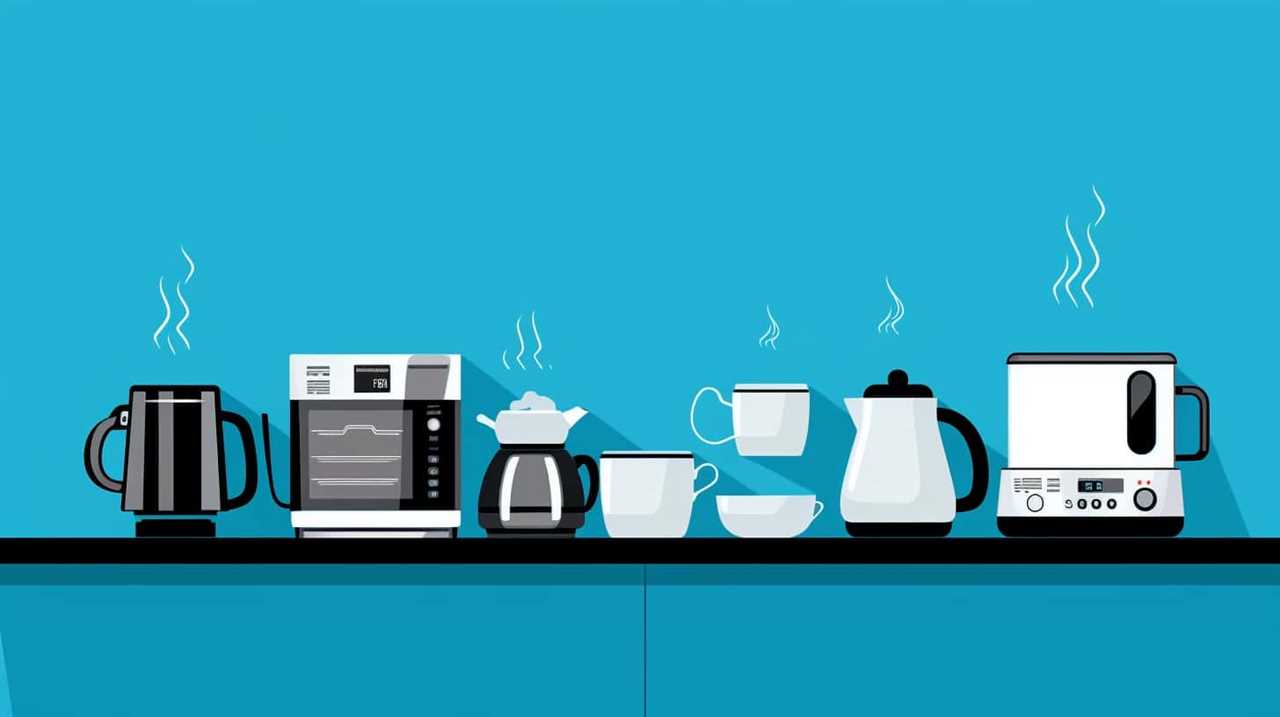
Using Power Strips and Surge Protectors
When it comes to using power strips and surge protectors, it is important to consider outlet overload prevention and power strip safety.
Power strips are designed to provide additional outlets for multiple appliances, but it is crucial to avoid overloading them with too many devices, as it can lead to overheating and potential fire hazards.
Using surge protectors can safeguard your appliances from voltage spikes and power surges, protecting them from damage.
Outlet Overload Prevention
To prevent outlet overload, it is advisable to utilize power strips and surge protectors. These devices not only provide additional outlets but also offer protection against power surges.
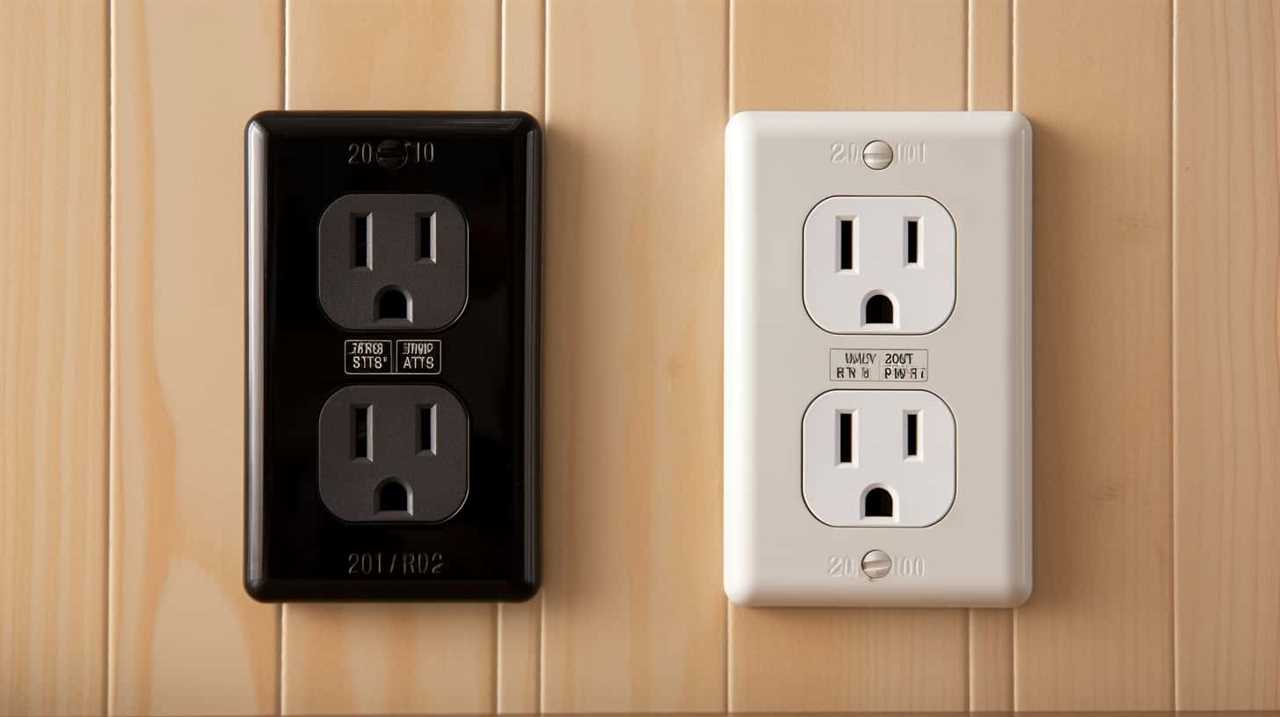
Here are four key considerations for outlet overload prevention:
- Outlet capacity: Before plugging multiple appliances into a power strip, it is crucial to check the outlet’s capacity. Each outlet has a maximum load it can handle, which is usually indicated in amps. Exceeding this limit can lead to overheating, electrical fires, or damage to the appliances.
- Power consumption: Understanding the power consumption of your appliances is essential. Each appliance has a wattage rating, which indicates the amount of power it requires to operate. By calculating the total power consumption of the appliances connected to a power strip, you can ensure it does not exceed the outlet’s capacity.
- Power strip rating: Power strips come with different amp ratings. It is important to select a power strip that can handle the total power consumption of the connected appliances. Choosing a power strip with a higher amp rating provides an extra level of safety.
- Surge protection: Power strips with surge protection safeguard your appliances from voltage spikes caused by power surges. This feature is particularly important for sensitive electronics as it prevents damage due to sudden increases in voltage.
Power Strip Safety
Additionally, it is crucial to prioritize power strip safety by utilizing power strips and surge protectors to avoid outlet overload. Power strips are a convenient solution for plugging in multiple appliances or electronic devices into a single outlet. However, if not used correctly, they can pose electrical fire risks.
To ensure safety, it is important to follow certain safety precautions when using power strips:
- Do not overload the power strip by plugging in too many devices. Refer to the power strip’s wattage and ampere ratings to determine the maximum load it can handle.
- Avoid daisy-chaining power strips together, as this can exceed their capacity and increase the risk of electrical fires.
- Regularly inspect the power strip for any signs of damage or wear, such as frayed wires or loose plugs, and replace it if necessary.
- Use a surge protector power strip to protect your devices from power surges that can potentially damage them.
Splitting the Load With Multi-Outlet Adapters
When it comes to splitting the load with multi-outlet adapters, there are several important points to consider.
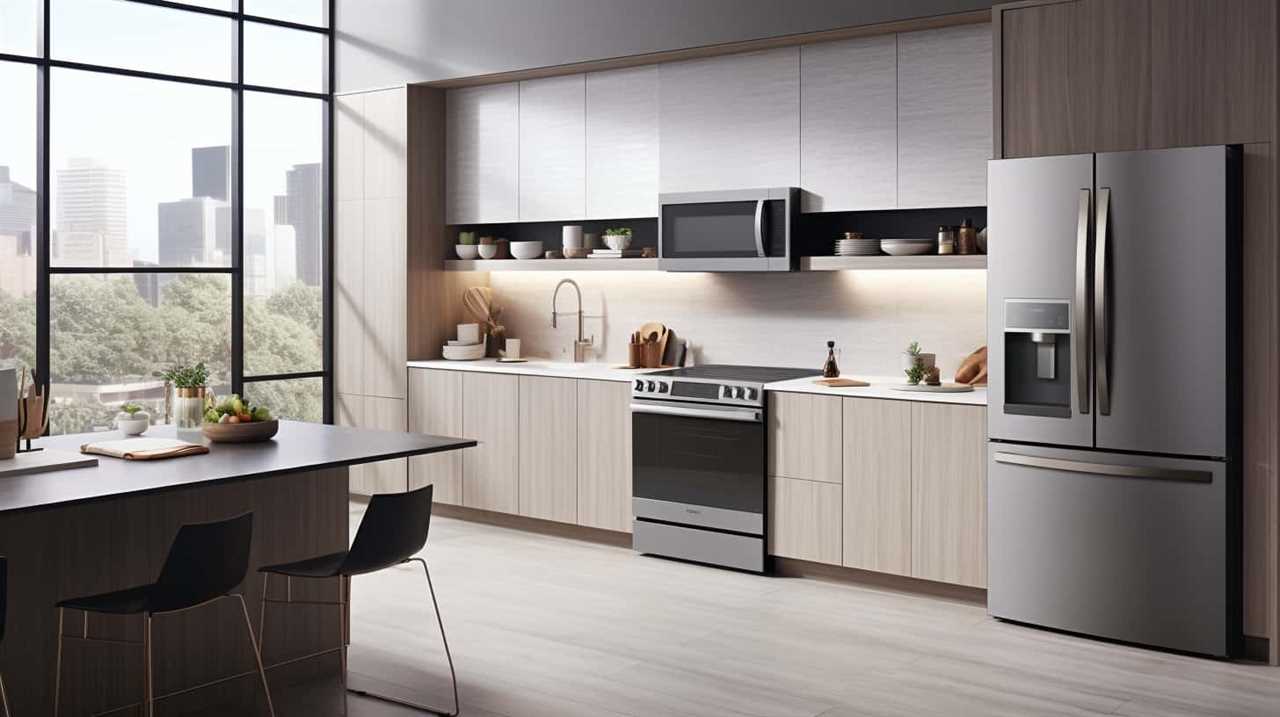
First and foremost, safety concerns must be addressed to ensure that the electrical system is not overloaded.
Additionally, power limitations should be taken into account to prevent damage to the appliances and the electrical circuit.
Safety Concerns Addressed
One potential solution to safely plug two appliances into one outlet is by using a multi-outlet adapter. These adapters allow multiple appliances to be plugged into a single outlet, effectively splitting the load. However, it is important to consider the safety concerns associated with using multi-outlet adapters.
Here are four key points to address these concerns:
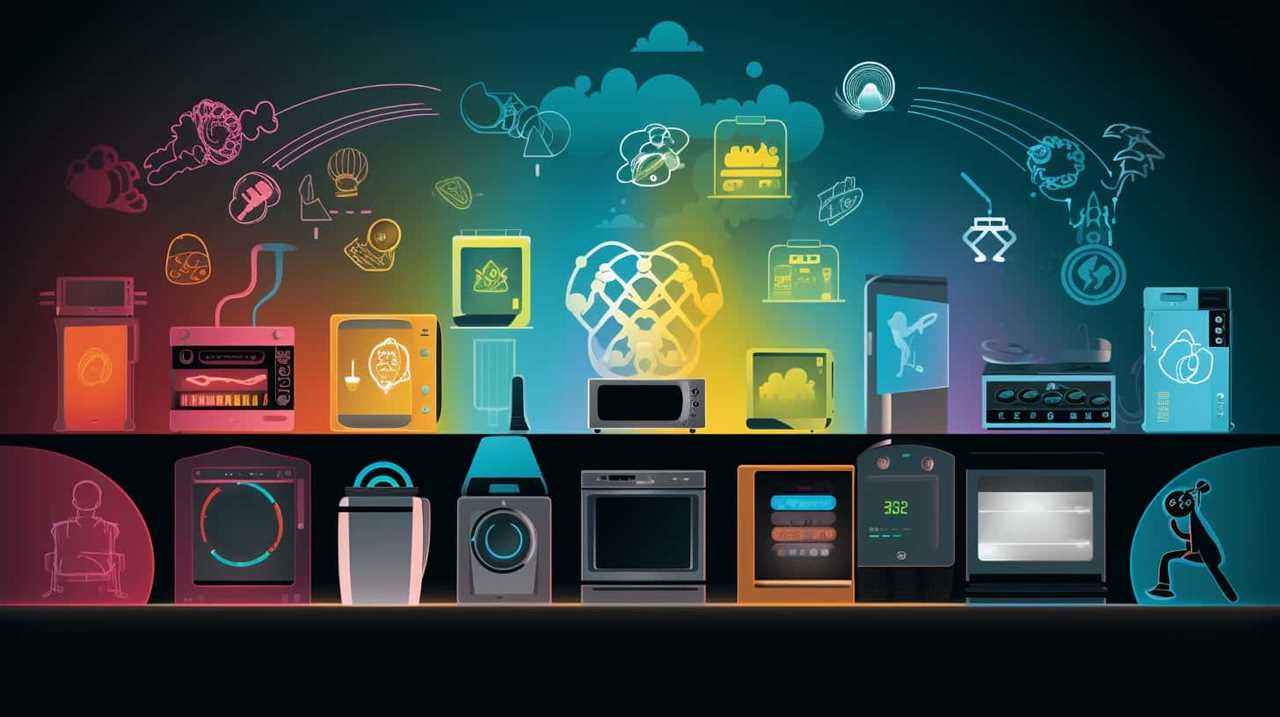
- Electrical fire risks: Overloading the outlet with too many appliances can cause overheating and increase the risk of electrical fires. Ensure that the total wattage of the appliances does not exceed the outlet’s capacity.
- Electrical shock hazards: Poorly made or damaged multi-outlet adapters can lead to electrical shocks. Inspect the adapter for any signs of wear or damage before use.
- Proper grounding: Ensure that the multi-outlet adapter is properly grounded to prevent electrical shocks and protect against power surges.
- Avoid daisy-chaining: Do not connect multiple multi-outlet adapters together in a chain, as this can overload the circuit and create a fire hazard.
Power Limitations and Considerations
To properly split the load when using multi-outlet adapters, it is crucial to consider power limitations and other important considerations. Electrical safety precautions and power management techniques play a vital role in ensuring the efficient and safe operation of multiple appliances connected to a single outlet.
When using a multi-outlet adapter, it is important to understand the maximum amount of power that can be safely drawn from the outlet. Each outlet has a specific ampere rating, which determines the maximum electrical current it can handle. Exceeding this limit can lead to overheating, electrical fires, or damage to the appliances.
To avoid overloading the circuit, it is essential to calculate the total power consumption of the appliances that will be connected. This can be done by checking the wattage or amperage ratings of each device and adding them together. If the total exceeds the outlet’s ampere rating, it is necessary to redistribute the load or use additional outlets.
Furthermore, it is important to consider the power management techniques. For example, high-power devices such as air conditioners or refrigerators should be connected to separate outlets to prevent overloading. Additionally, using power strips or surge protectors with built-in circuit breakers can provide an added layer of protection by automatically shutting off the power in case of an overload.
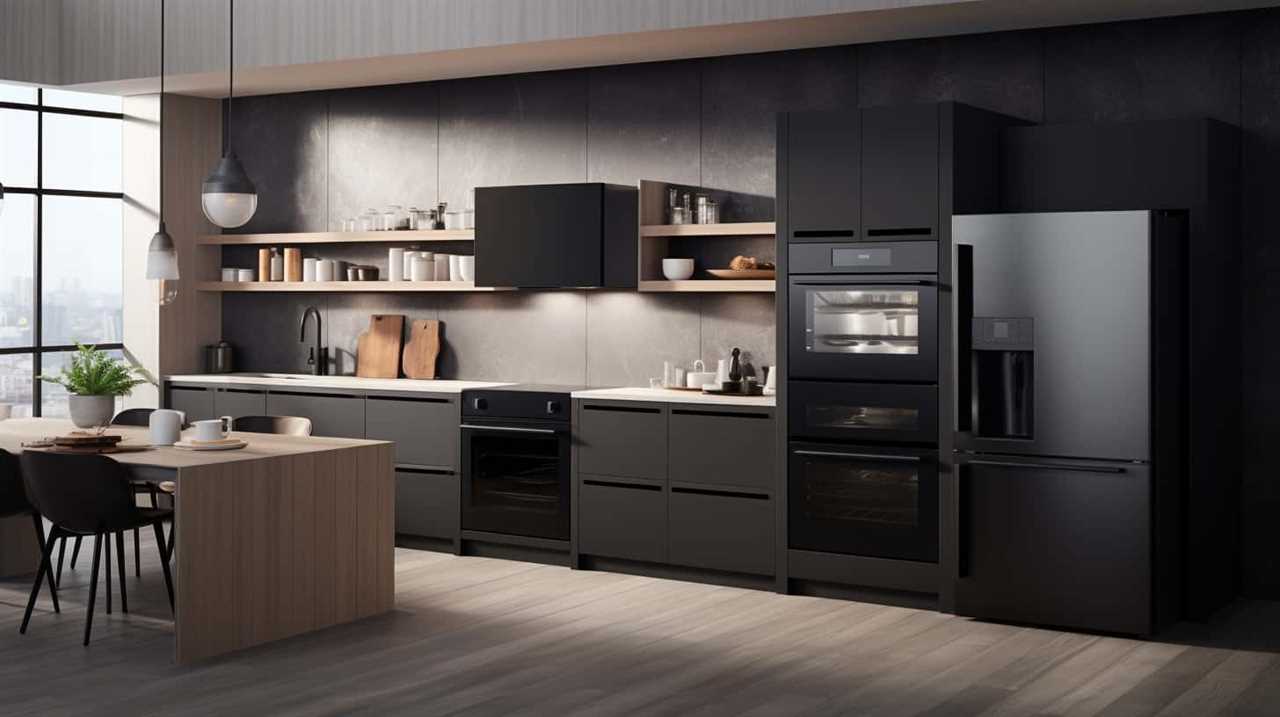
Extension Cords and Their Limitations
Extension cords have specific limitations that should be considered when plugging multiple appliances into one outlet. To ensure electrical safety and prevent hazards, it is important to understand the limitations of extension cords. Here are four key points to keep in mind:
- Length: Extension cords have a maximum recommended length, usually around 100 feet. Using longer cords can result in voltage drop and overheating, potentially causing damage to appliances and electrical circuits.
- Ampacity: Each extension cord has a specific amp rating, indicating the maximum electrical load it can safely handle. Exceeding this rating can lead to overheating and potentially start a fire.
- Overloading: It is crucial not to overload extension cords by connecting too many appliances or devices to a single cord. This can exceed the cord’s amp rating and pose a safety risk.
- Proper Use: Extension cords should be used only temporarily and not as a permanent solution. They should never be run through walls, ceilings, or under carpets, as this can damage the cord and increase the risk of electrical shock or fire.
Understanding these limitations is vital for extension cord safety. However, to ensure long-term safety, it is equally important to focus on the importance of proper wiring and maintenance.
The Importance of Proper Wiring and Maintenance
Proper wiring and maintenance play a crucial role in ensuring electrical safety and preventing hazards when plugging multiple appliances into one outlet. Electrical systems require regular inspection and maintenance to identify any potential issues such as loose connections, frayed wires, or faulty outlets. These problems can increase the risk of electrical fires, shocks, or damage to the appliances.
Adequate wiring is essential to accommodate the electrical load of multiple appliances without overloading the circuit. It is important to ensure that the wiring is correctly installed and meets the necessary electrical standards to prevent overheating or short circuits.

Regular maintenance, including cleaning and tightening connections, can help prevent electrical issues. By prioritizing proper maintenance, individuals can ensure the safety of their electrical systems and reduce the risk of accidents.
Seeking professional advice and solutions can further enhance electrical safety and address any specific concerns or requirements.
Seeking Professional Advice and Solutions
Seeking professional consultation and solutions is vital when considering the possibility of plugging two appliances into one outlet. This ensures that the electrical system is not overloaded and that the appliances are compatible with each other and the outlet. Here are four reasons why seeking professional guidance is crucial in this situation:
- Safety: Professionals have the expertise to assess the electrical system and determine if it can handle the load of two appliances. They can identify potential risks and recommend appropriate solutions to prevent electrical hazards.
- Appliance Compatibility: Professionals can evaluate the power requirements of each appliance and determine if they can be safely operated on the same circuit. They can provide guidance on using power strips or installing additional outlets if needed.
- Code Compliance: Electricians are knowledgeable about local electrical codes and regulations. They can ensure that any modifications or installations meet the necessary standards.
- Long-Term Efficiency: Seeking professional advice can help optimize the electrical system, preventing unnecessary energy waste and reducing the risk of electrical failures.
Frequently Asked Questions
What Are the Potential Risks of Plugging Two Appliances Into One Outlet?
The potential risks of plugging two appliances into one outlet include overloading the circuit, which can lead to overheating and fire hazards. It is important to consider the electrical capacity of the outlet and use appropriate power extension devices to avoid these risks.
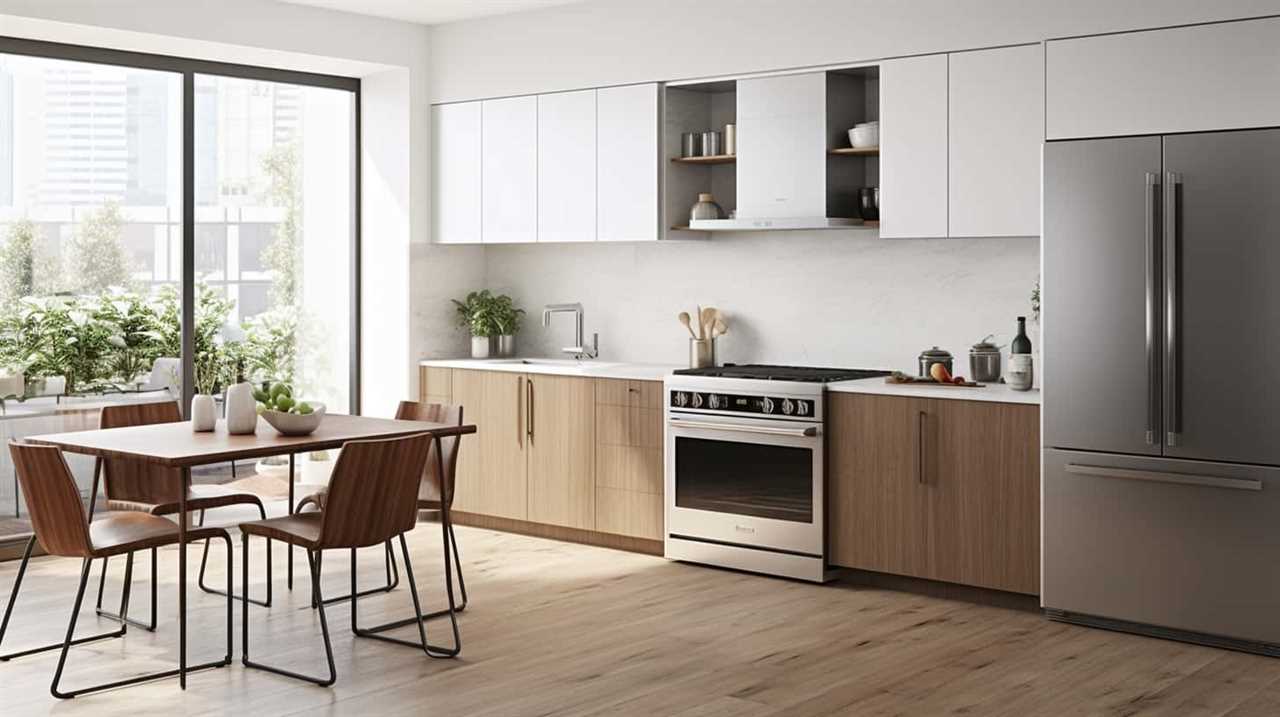
Can I Use a Power Strip or Surge Protector to Safely Plug in Multiple Appliances?
A power strip or surge protector can safely accommodate multiple appliances, providing additional outlets and protecting against power surges. However, it is important to consider the power rating of the appliances and the capacity of the power strip or surge protector to avoid overload and potential hazards.
How Can I Split the Load With Multi-Outlet Adapters to Avoid Overloading the Circuit?
Proper load distribution is crucial to avoid overloading a circuit and potential fire hazards. Multi-outlet adapters can be used to split the load, but it is important to consider the power requirements of the appliances and the capacity of the outlet.
What Are the Limitations of Using Extension Cords for Plugging in Multiple Appliances?
Using extension cords to plug in multiple appliances can lead to overload and fire hazards. It is important to understand the electrical capacity of outlets and consider alternatives such as power strips or hiring an electrician for additional outlets.
Why Is Proper Wiring and Maintenance Important When Plugging in Multiple Appliances?
Proper wiring and maintenance are crucial when plugging in multiple appliances to ensure safety and prevent electrical hazards. It is important to consult professional electricians to avoid common mistakes in wiring and ensure compliance with building codes and regulations.
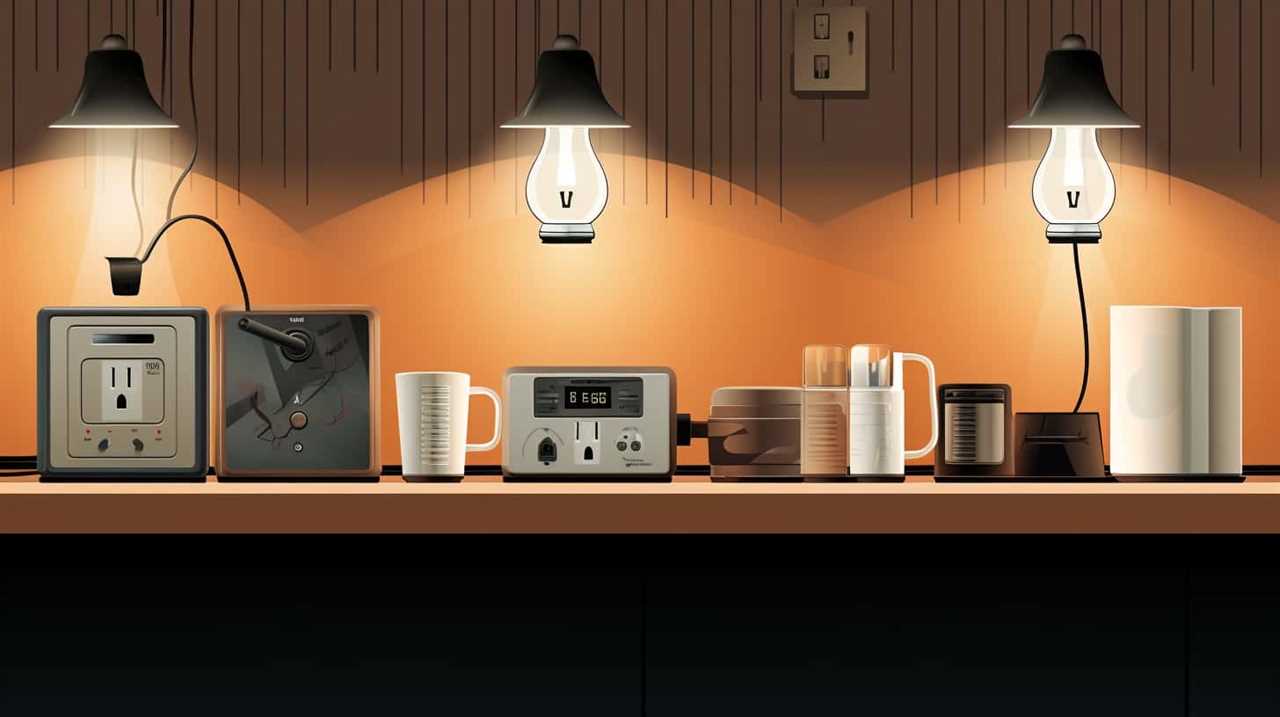
Conclusion
In conclusion, plugging two appliances into one outlet can lead to electrical overload and potentially dangerous situations. Understanding the power capacity of outlets, the power requirements of appliances, and the risks involved is crucial.
Splitting the load with multi-outlet adapters can help mitigate the risks, but it is important to be mindful of the limitations of extension cords.
Seeking professional advice and ensuring proper wiring and maintenance are essential for a safe and efficient electrical setup.




